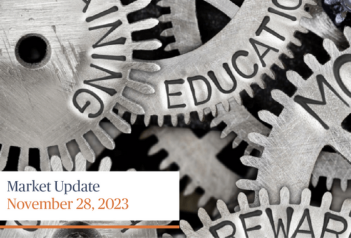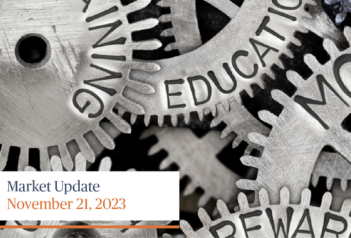After hitting an all-time high on February 19th, the S&P 500 index fell 35% to 2,191 on March 23rd and then bounced back almost 20% as of yesterday’s close.

The YTD performance will look more bearable as investors look at their first quarter statements, but a major question still needs to be answered: was March 23rd the bottom? Before we try to answer that question, let’s agree anyone who gives you an answer is going to look very smart (lucky?) or completely wrong when this is all over! What we can do as long-term investors is first to look at history as a guide and second to apply the merits of rebalancing portfolios.
According to the Bespoke Group, in the six instances when the S&P 500 index fell 30% after a record high, only once did it bottom within a year. The median bottom takes 1.6 years and the median time to reach a new high is 6.3 years. Some of the largest stock rebounds have occurred in bear markets, hence the recent market bounce should not come as a surprise. During the Great Financial Crisis of ’08-’09, there were five stock rebounds of +15% to +27% within the start to finish of the bear market.
The probability of a retest of the March 23rd low is high. Assuming a mid-April peak in the trajectory of new COVID-19 cases in the U.S. and the possible beginning of economic normalization in June, let’s also consider another historical relationship: stocks bottom typically four months before a recession ends. While most economists are predicting a 6-month recession this year, we have never before experienced this amount and extent of monetary responses from global central banks. What we are experiencing today is truly unprecedented. Finally, from a technical analysis standpoint, I have pointed out many times that market tops peak rather quickly, whereas market bottoms are made in a process.
So, what is the answer to our major question? Maybe. If March 23rd was indeed the bottom, we can all focus on helping our relatives and community. If we retest 2,191, we should not be surprised as it would fit the pattern of other periods. Both scenarios still warrant being a disciplined investor.
To help visualize the benefits of not trying to time the market, we created a broad portfolio allocated 60% in the MSCI All Country World Index to represent stocks and 40% in the Bloomberg Barclays U.S. Aggregate Index to represent bonds.
The first simulation runs this portfolio for the last 25 years without any rebalancing. The second simulation runs the same exact portfolio, but rebalanced annually regardless of the market being up or down. The table below shows how rebalancing every year improves the overall returns as well as reduces the volatility and the maximum drawdown:

If you have any questions or want to have a conversation about the market or your portfolio, please contact Liz, Ed, Fred, Scott, Tyler or myself. Your Sendero team is ready to help.
Best Regards,

Amaury de Barros Conti
210-930-9409
aconti@sendero.com


